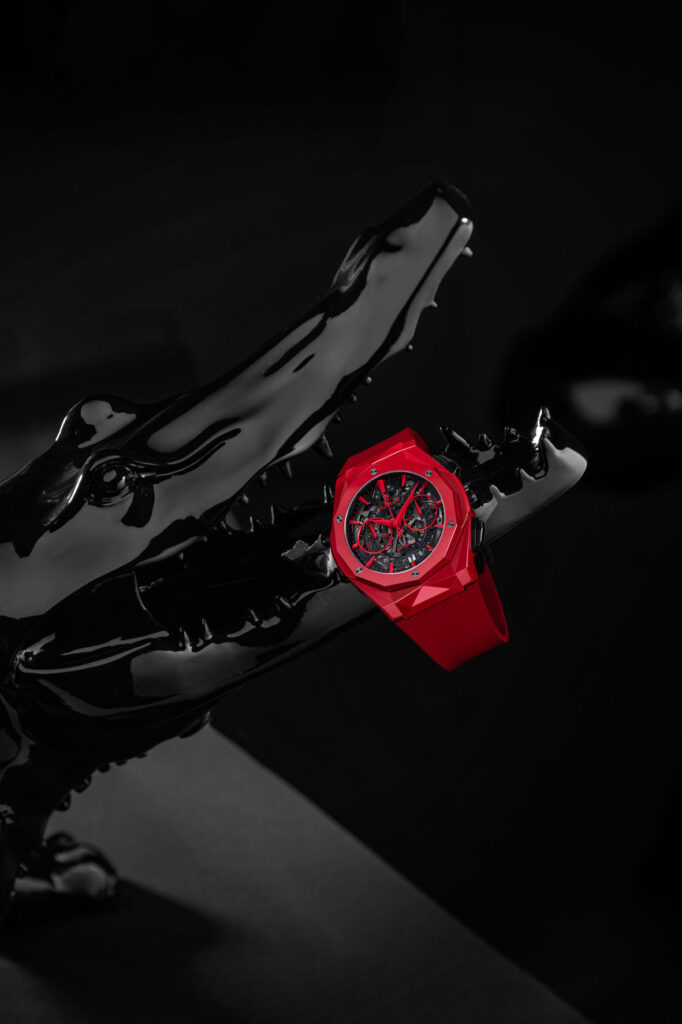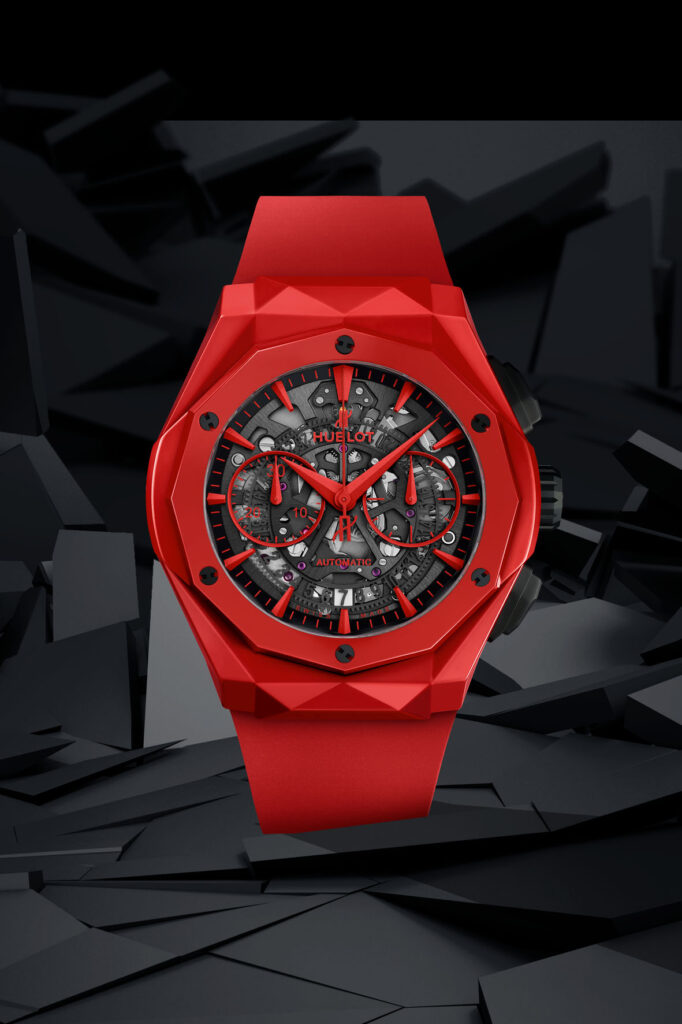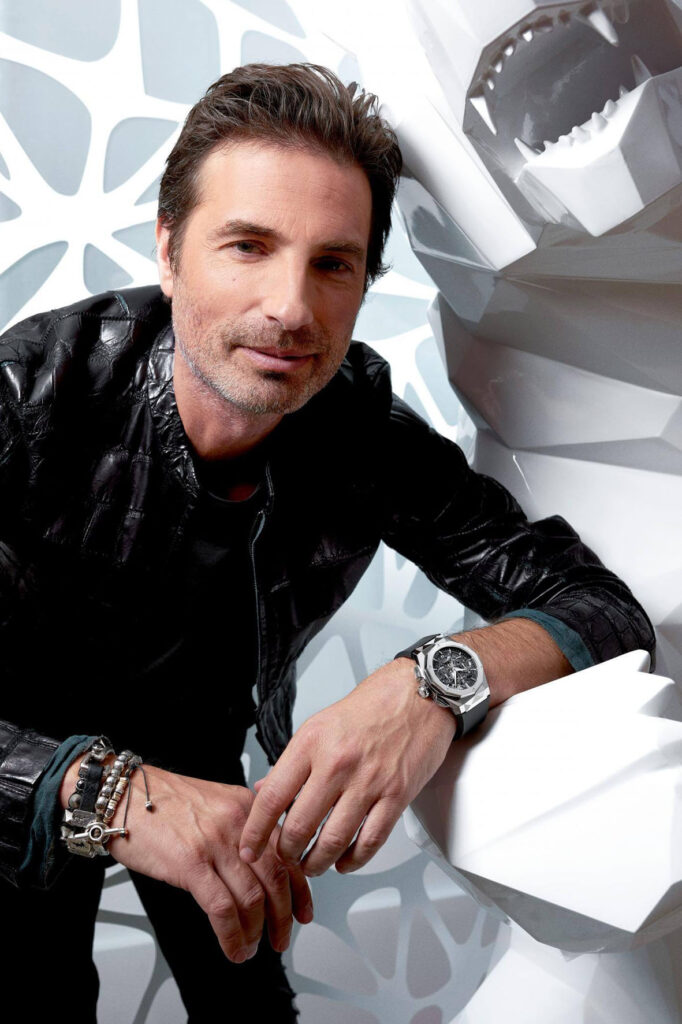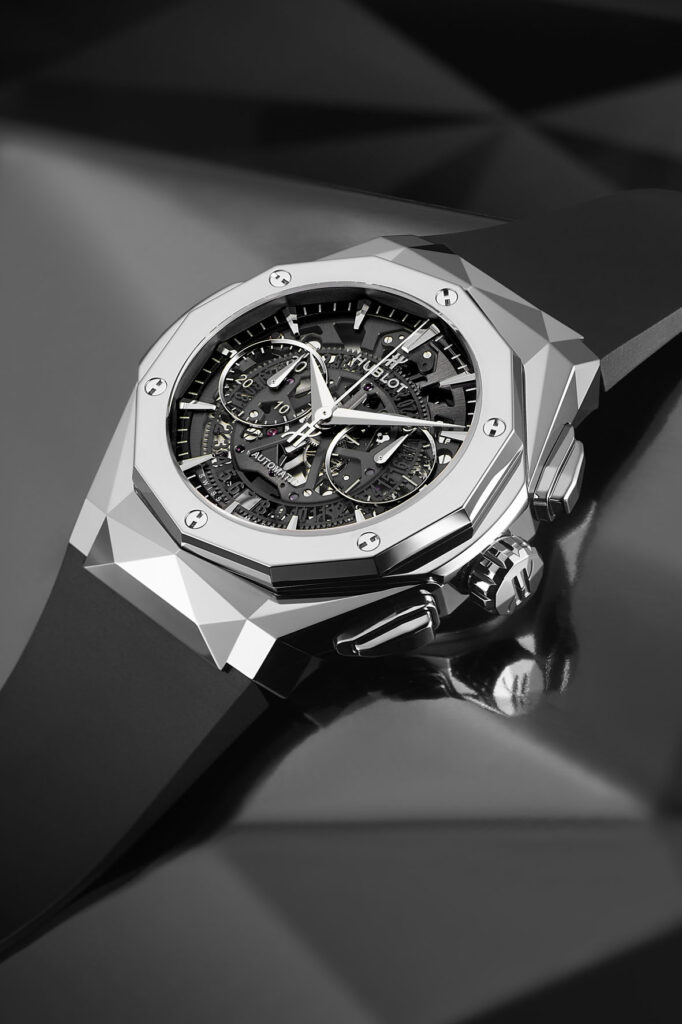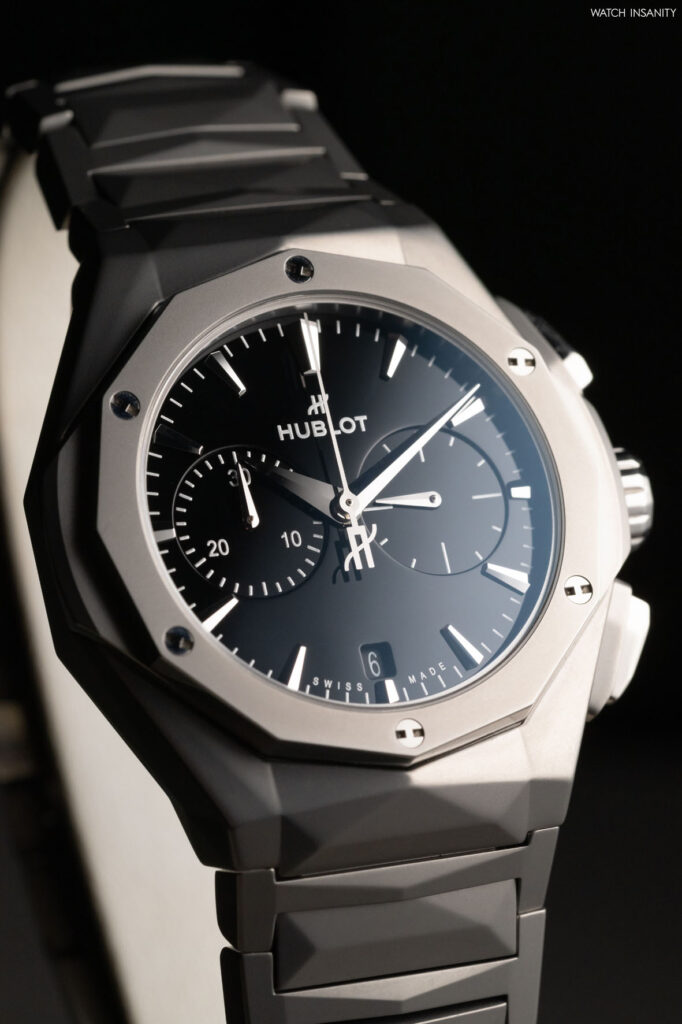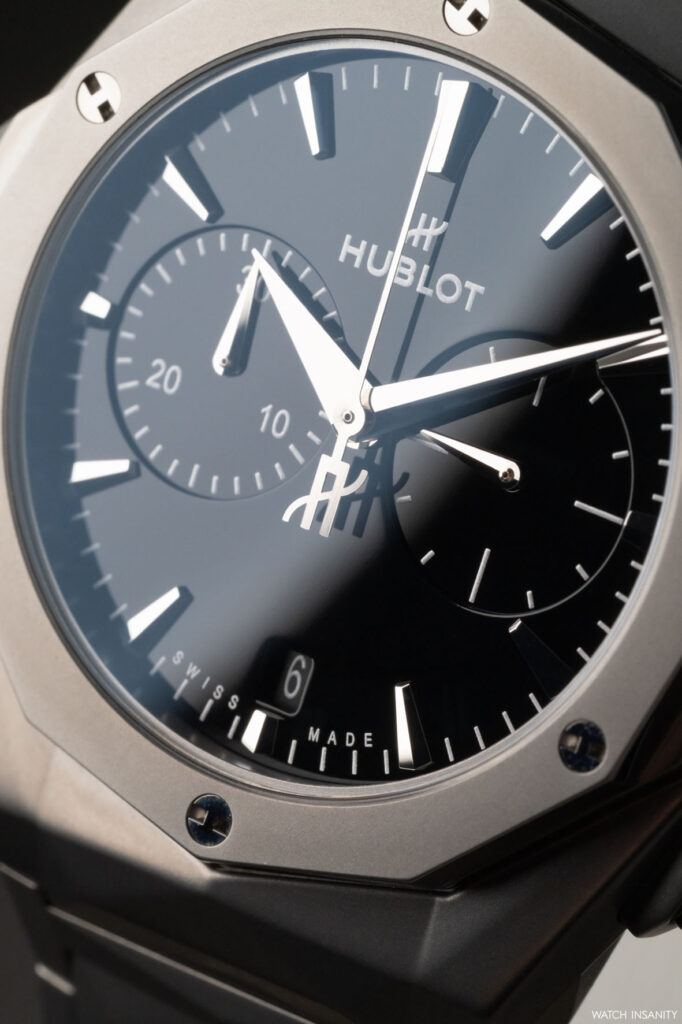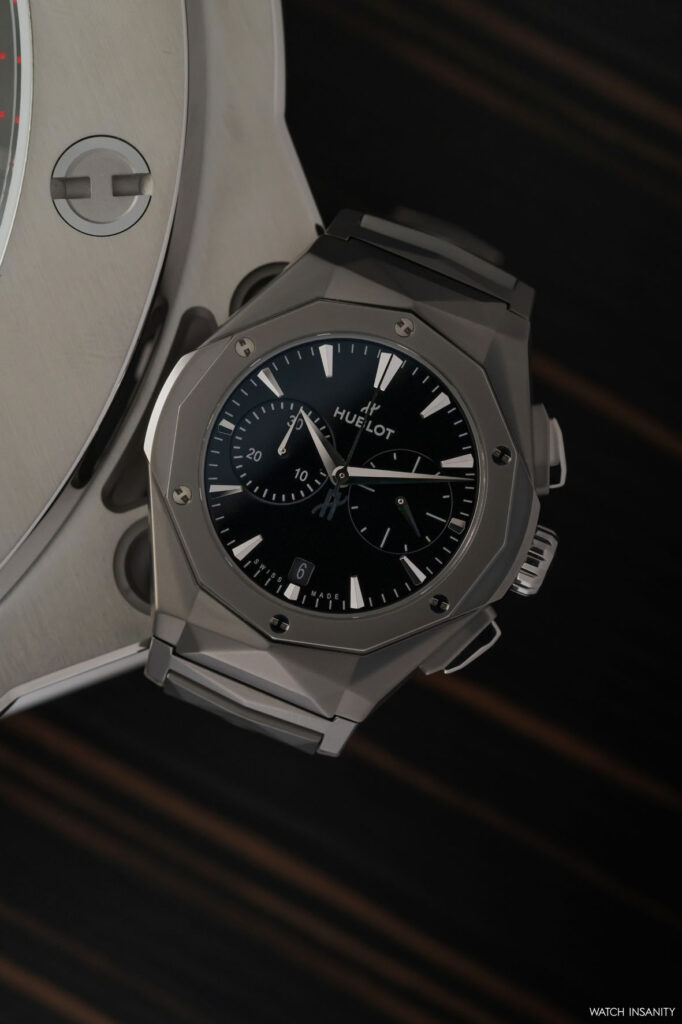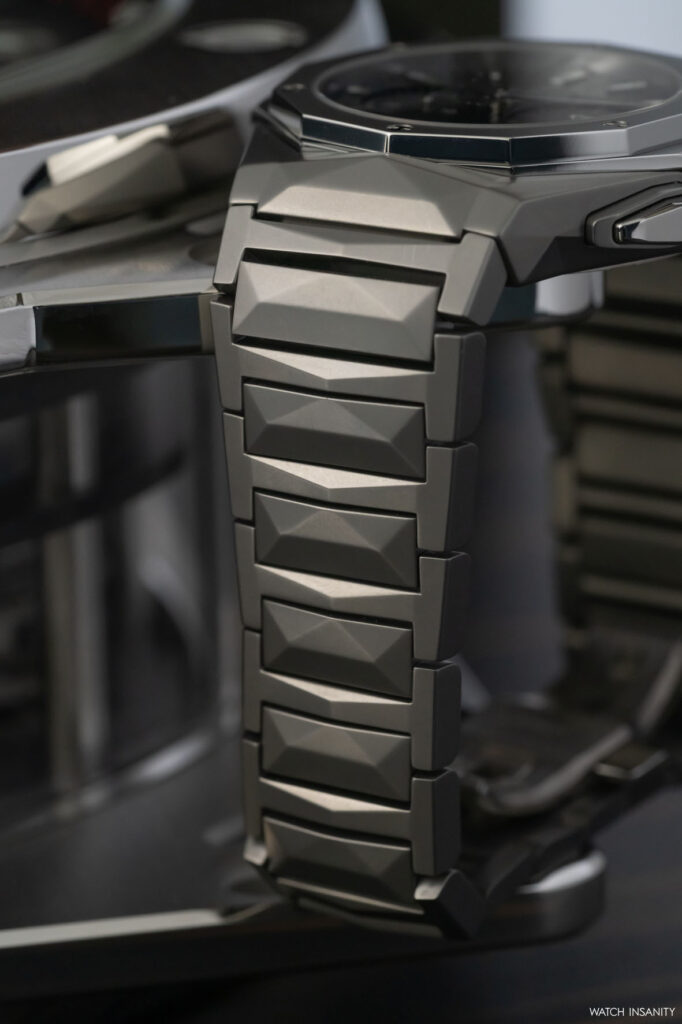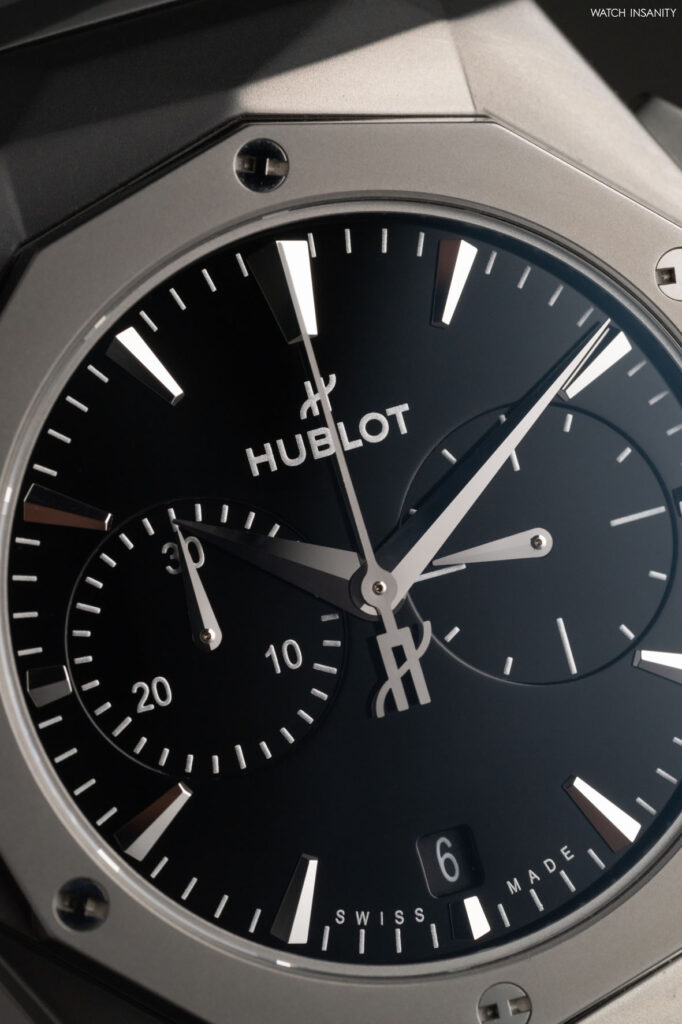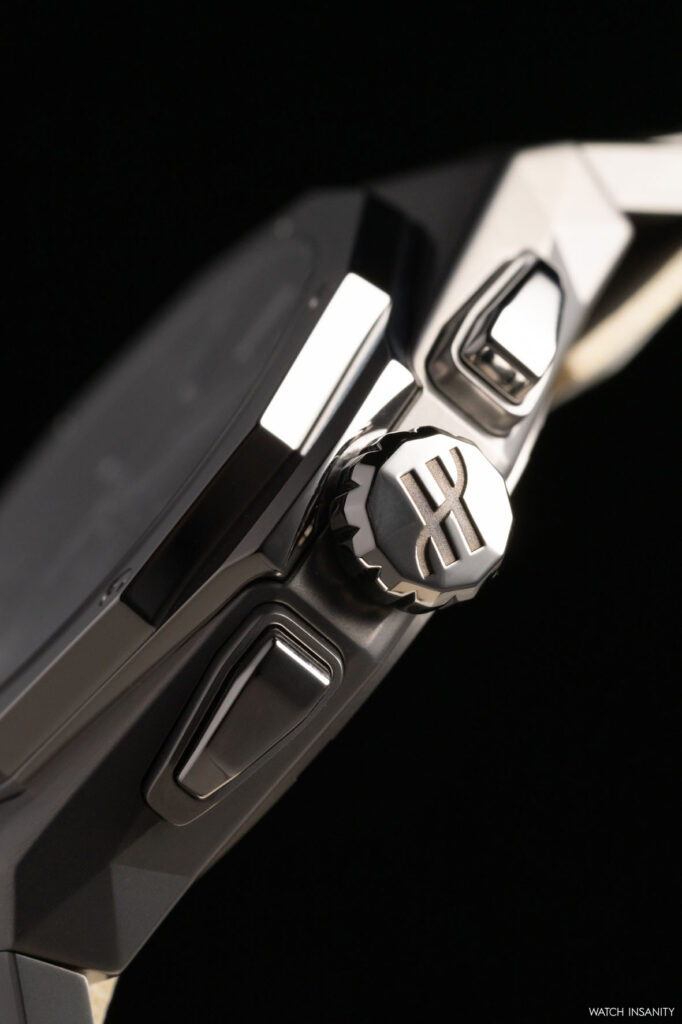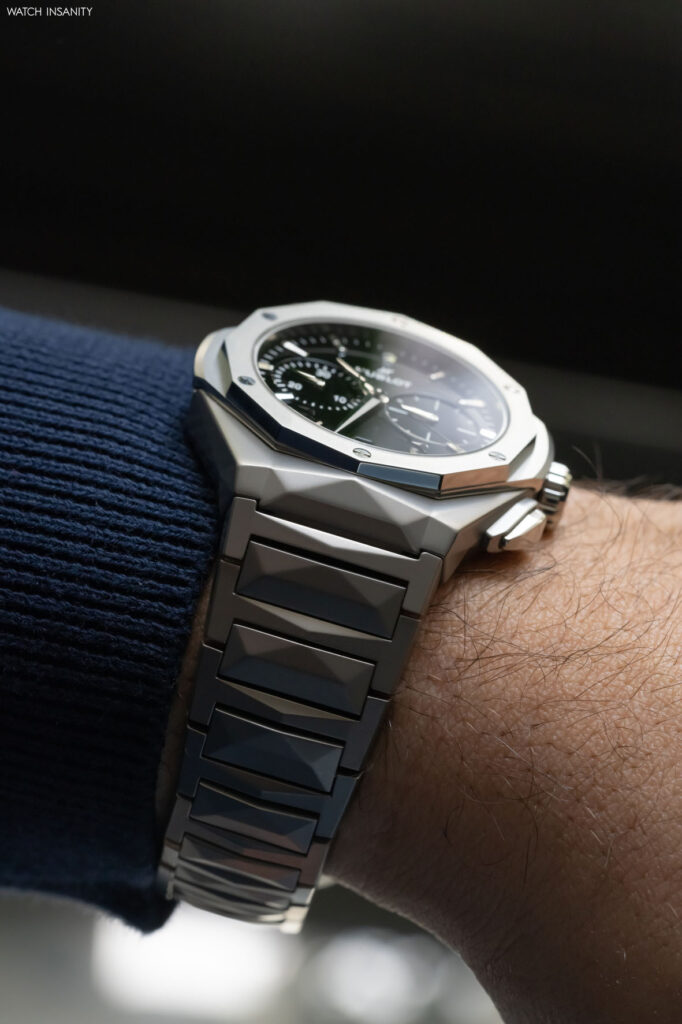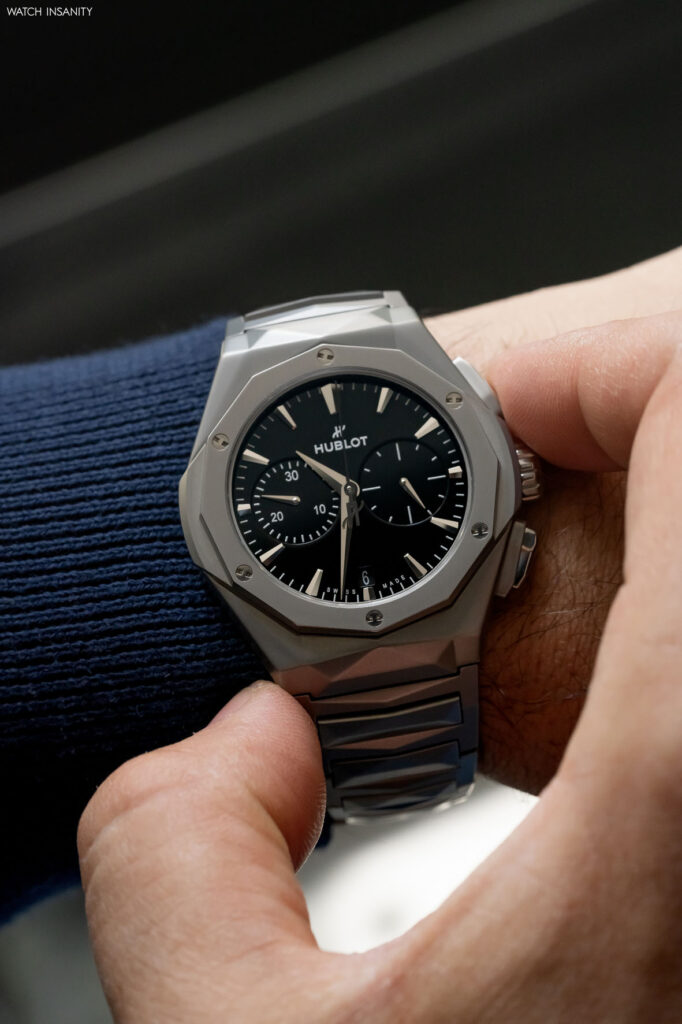Orlinski and Hublot: between watches and sculpture
30 June 2023‘Do I want to be Gerald Genta? Not at all. He was a genius, but in the end, he is only known by enthusiasts and insiders. I’m sure there are more people who know Richard Orlinski than Gerald Genta.’ Speaking is Richard Orlinski himself, a Parisian sculptor and one of the most famous neo-pop visual artists in the world, who has been collaborating with Hublot over the past six years. He has created among some of the most incredible pieces in the Classic Fusion collection, to which he has instilled his artistic vision, bending it and giving shape to one of the most beautiful and damned tasks: timekeeping. We met him in Geneva, at Watches and Wonders. Half an hour of interview, never banal, very stimulating. Just like his artworks and his timepieces.
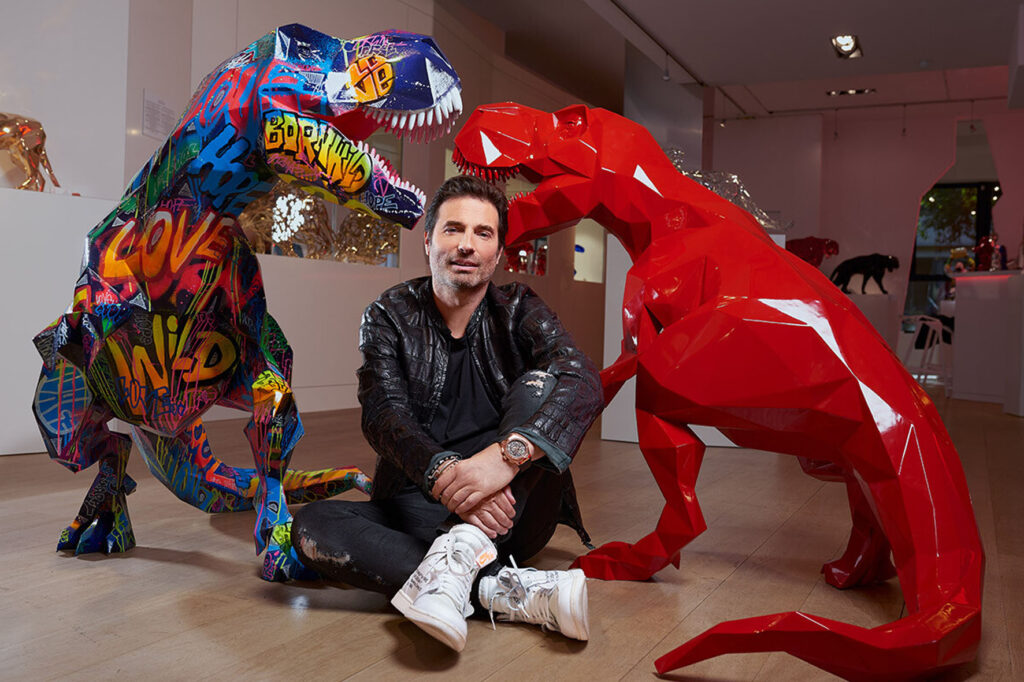
This is Watch Insanity so… what’s insane about your watches?
The minimum. We decided to mix Hublot’s DNA with that of my works and the result was excellent in terms of mix of shapes and colors. From the start, we wanted to create a watch that could actually be worn – not a work of art that would be difficult to wear – while I wanted something that one could wear every day. Its function is to tell the time and I cannot think of disregarding this, as sometimes happens with watches created in collaboration with artists and on which it is very difficult to read the time, because creativity overcomes function. I could have made a watch with King Kong coming out of the dial, but that wasn’t my goal; I wanted a piece of art, but wearable and clear.
Why Hublot?
It’s very easy. The reason why we chose each other is the freedom to create. Before collaborating with Hublot I had received offers from other brands, but Hublot gave me carte blanche to create what I wanted, starting from an idea, a sketch. And that’s what it is. If you look at my watch and the initial sketches, you will see that they are very similar. I don’t think other brands would have allowed me to create my own watch with so much freedom. Some big brands don’t work with external designers for their pieces, some smaller ones do, but I don’t like them, especially when they simply ask you to customize a watch, not to create one. It’s very different, it’s neither creation nor creativity. We have done a great job with Hublot and achieved what we wanted, also because the relationship with their team is very relaxed: we work together, we create together.
After all, Hublot’s motto is ‘The Art Of Fusion’.
And I agree with it, 100%. In my art I use the same ‘raw materials’ as Hublot, from the colors to the materials. I work with them in micro, in my studio in macro, but the processes are the same.
Is it difficult to switch from macro to micro and vice versa?
It was a bit complex at the beginning, but I eventually found that it works the same way. I’m talking about the shape, the design. If you enter my studio or the Hublot atelier you see people working in the same way, the only difference is the size.
Where is your starting point when you receive a brief for a new watch from Hublot?
Finding a way to create a reasonably priced, wearable watch that can also be shared. If I let my sculptures inspire me too much, I realize that things get complicated: too few watches would be sold to too few people, while I want as many people as possible to own them. I’m also a collector, so every now and then I let myself be inspired by the details of some watch I own.
What is the hardest material to work with to make a watch?
Ceramics, especially when it comes to finding the right color, which is what I want, and which remains the same over time without fading. Luckily in Hublot they have ceramics champions.
Someone says that the new Classic Fusion Chronograph Orlinski is less Orlinski and more Hublot: do you agree?
Not completely. One of my dogmas is ‘less is more’: if you look at the watch from this point of view, you understand that it has a lot of me. It’s harder to make things simple than to fill them with details.
You work with watches, but what is time for you?
It is what brings us to the end. It’s precious, because it’s like a treasure, and it’s the most important thing in the world. Time makes you exist, gives you the possibility to do what you want and it tells me, for example, that within one year I have to do the same things other people would do in ten years.
What is art?
It is everything and it is everywhere. We are art, it is something that comes from within us. Even what a child draws is art. Who are we to say what art is and is not? For me, art is everything.
You are a star in the art world. Do you think you will also become a star in the world of watchmaking?
I am a watchmaking star (he laughs heartily, ed.)! If you look at the first watches we created with Hublot six years ago and the last ones this year, you will notice that, however different, the design is perfectly consistent. Think, for example, of Porsche, whose cars are instantly recognizable – from the 1960s to today. What I want is to keep this design for years. I’m not Gerald Genta, but I think with this design we will remain in the history of watchmaking for a long time.
Finally… what does it take to be an artist?
Be who you are, in any place or situation. It’s just a matter of sincerity, because people love sincerity. And that’s what I found in Hublot, where I feel at home. It all started from mutual affection, because without that it’s hard to work and build a long-lasting relationship.
HUBLOT CLASSIC FUSION CHRONOGRAPH ORLINSKI
So, let’s have a look at the new Classic Fusion Chronograph Orlinski Titanium, the fourth model created by Hublot in the six years of collaboration with the French artist, who has ventured into the titanium field for this limited edition. Although he has confessed that he considers ceramic to be the most complex material to work with, micro-blasted titanium is no joke either. It is aesthetically beautiful, it is very light, but it easily catches on fire during processing. One more reason to appreciate the artist’s skill and Hublot’s industrial capabilities.

It is not the first time that Orlinski touches the Classic Fusion Chronograph. Already in 2017, the titanium Aerofusion bore his signature, but if we wanted to compare it with the current one, we would seem to be talking about two different watches. That first one, imposing and complex – 45 mm in diameter and skeletonized dial – while the watch that was just presented at Watches and Wonders is clean and simple.
HUBLOT AND ORLINSKI’S AESTHETIC SIGNATURE
The new Classic Fusion Chronograph Orlinski Titanium comes in a more contemporary size, which dropped to 41 mm by 12 in thickness – however it maintains the faceted workmanship typical of the contemporary French artist. A complex case, where the dodecagonal shape transforms the bezel into a polygon whose reflections extend to the lugs and bracelet.
The latter (there is also a version with a rubber strap) is a sculpture within a sculpture, thanks to its multi-faceted central link which makes it so muscular, but very wearable. All with a micro-blasted finish that, in our opinion, makes the watch rather sporty.
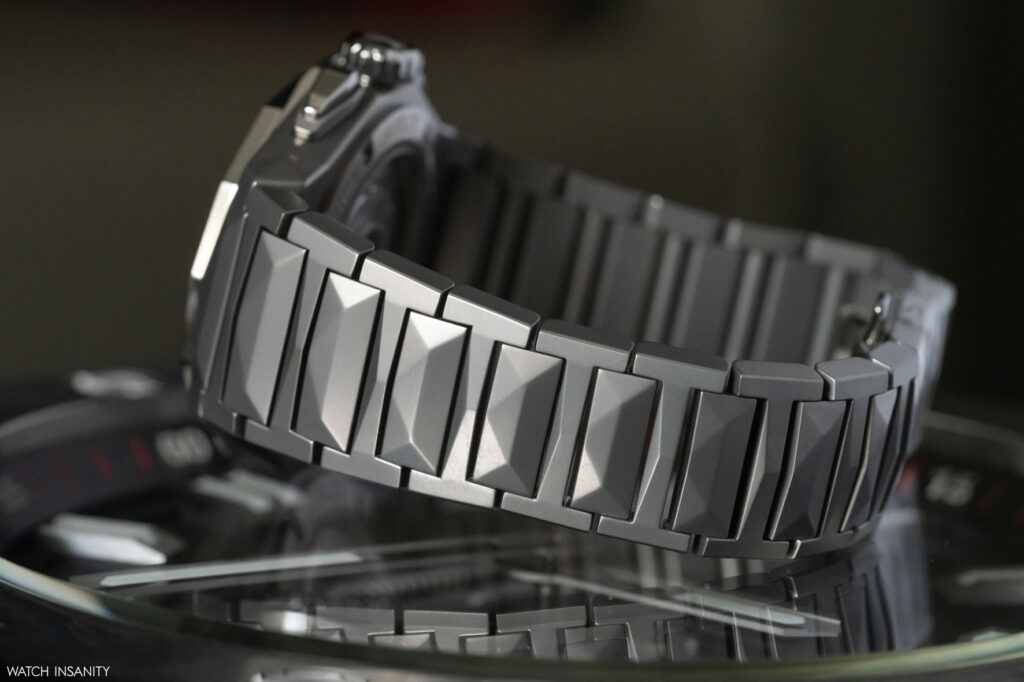
While the sharply faceted case geometry is largely carried over from earlier Orlinski versions, the predominantly matte surface develops this complex shape in a much more aggressive light. The shiny, reflective, gem-like surfaces of previous models have been left behind, replaced with the clean uniformity of matte titanium. There is still a handful of shiny areas around the edge of the dodecagonal bezel and trapezoidal pushers, but they don’t compromise the more understated impression of the watch.
THE DIAL AND THE MOVEMENT
Contrasting with the multifaceted complexity of the case, the dial of the Hublot Classic Fusion Chronograph Orlinski is simple. Minus the brighter elements such as the faceted indexes and mirror-polished Dauphine hands, the glossy black dial is functional and simple, with the chronograph minute counter at 9 o’clock and the seconds counter at 3 o’clock looking minimal. The date display at 6 o’clock almost disappears in this black-on-black configuration and does not disturb the overall balance of the dial.
Little to say about the caliber: the reliable HUB1153, automatic equips most of the Classic Fusion Chronographs. Developed by Hublot from the ETA 2892-A2, with the addition of a Dubois-Depraz chronograph module, it oscillates at 28,800 vibrations/hour with a 42-hour power reserve.
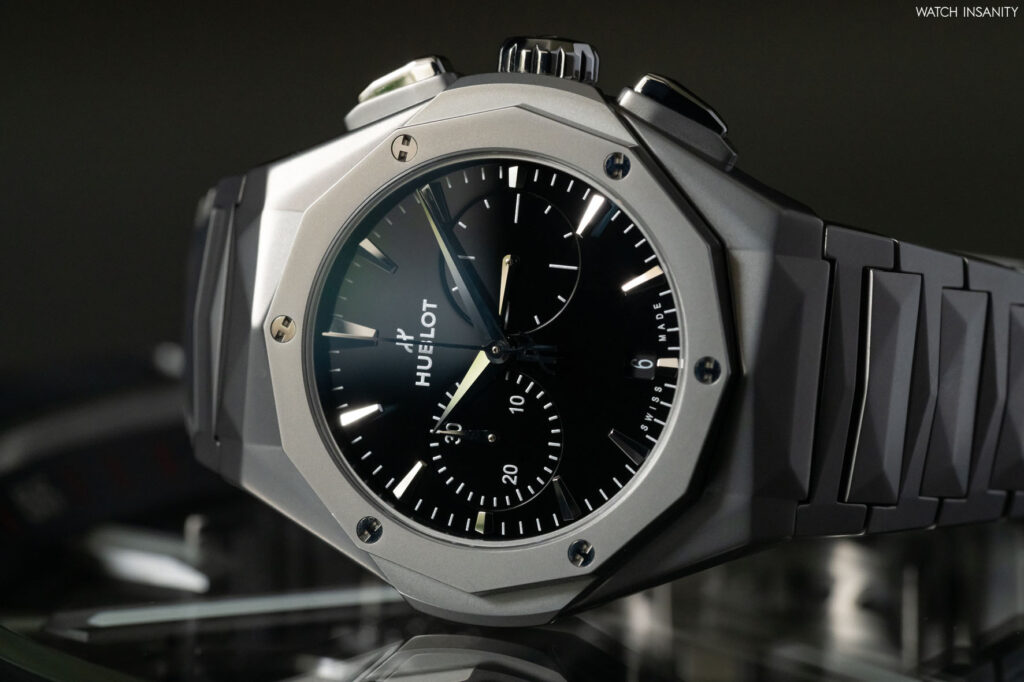
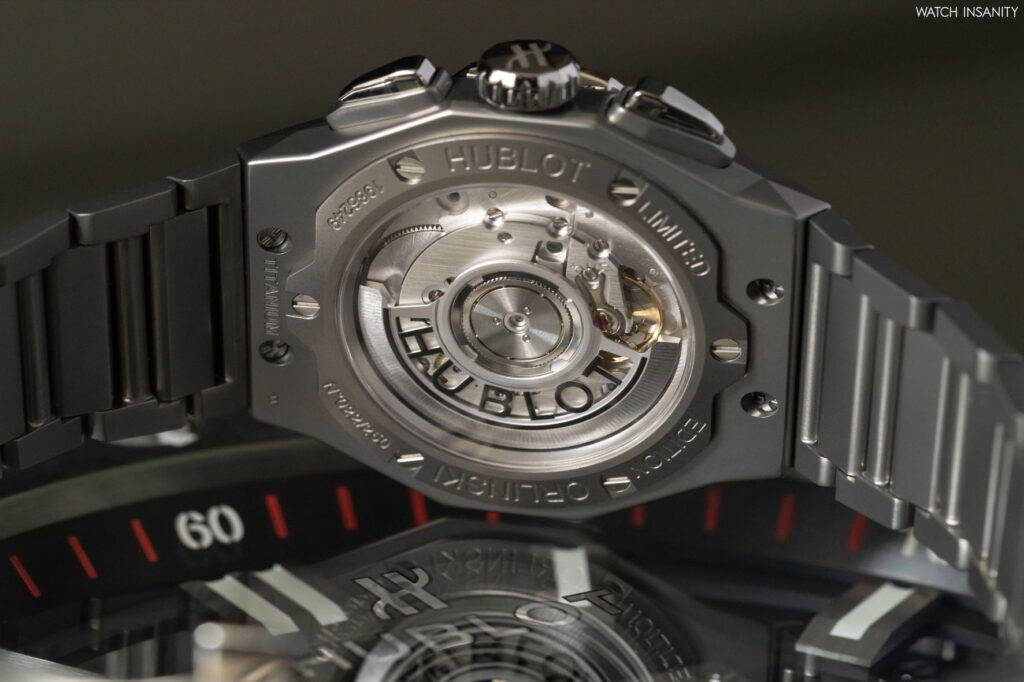
Having said that it is a limited edition with both a rubber strap (500 pieces) and a titanium bracelet (250), and having said that the two versions cost 15,300 and 19,000 euros respectively, we think that the best way to summarize the interview and the watch overview is to borrow the words of Ricardo Guadalupe, CEO of Hublot: ‘There are many parallels between watchmaking and art, both of which require creativity, passion, determination and boldness. These values come together in this collaboration with Richard Orlinski to explore new and memorable designs.’ We believe they succeeded.
By Davide Passoni

